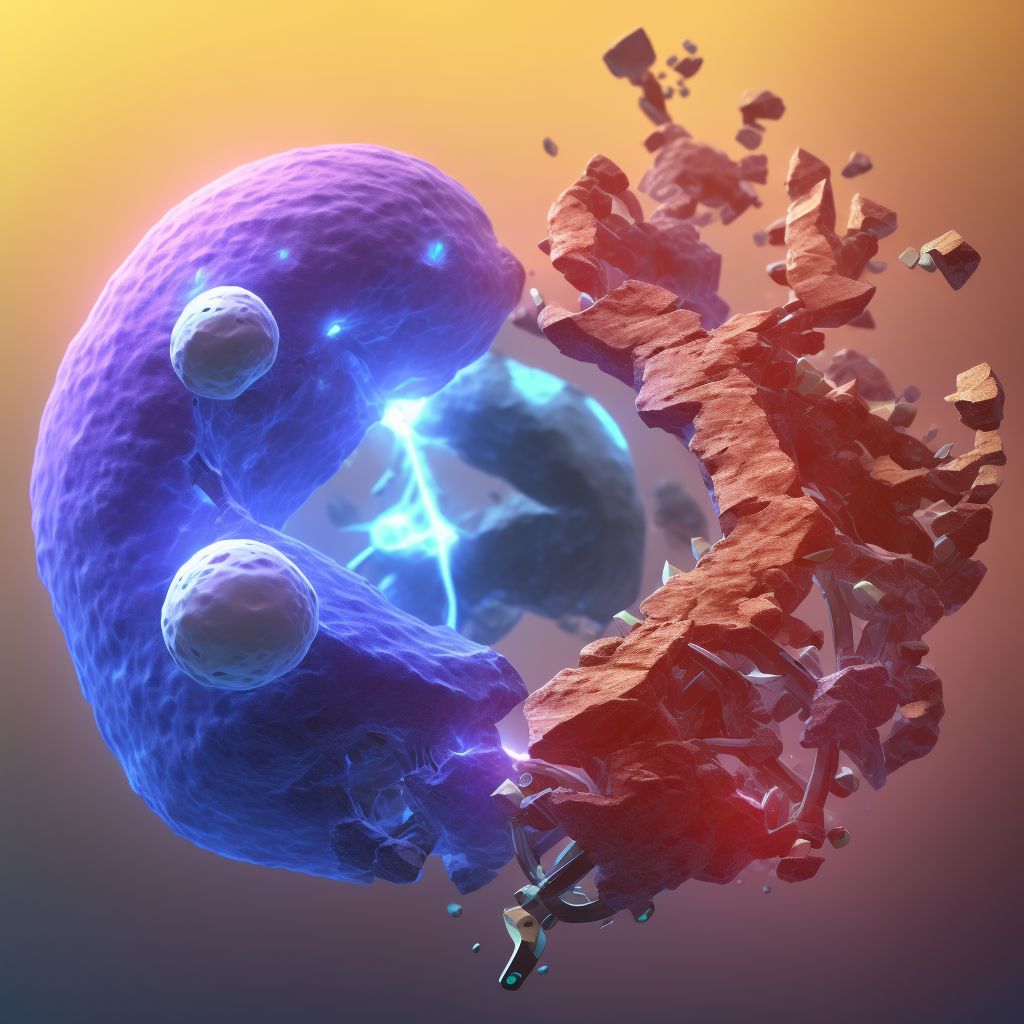
Torus fracture of upper end of left tibia, subsequent encounter for fracture with nonunion Save
ICD-10 code: S82.162K
Disease category: S82.162: Torus fracture of upper end of left tibia
Torus Fracture of Upper End of Left Tibia: A Subsequent Encounter with Nonunion
A torus fracture, also known as a buckle fracture, is a common type of childhood injury that occurs when the bone buckles or bulges without breaking completely. This article focuses on the torus fracture of the upper end of the left tibia, specifically discussing a subsequent encounter with nonunion.
Nonunion refers to the failure of a fractured bone to heal within the expected timeframe. It can occur due to various factors, such as poor blood supply, infection, improper immobilization, or excessive movement of the fractured bone. Understanding the implications of nonunion in torus fractures is crucial for effective management and recovery.
When a torus fracture fails to heal properly, it can lead to persistent pain, limited mobility, and functional impairment. The nonunion may result in a delayed union or pseudoarthrosis, where the fractured bone does not connect and form a stable joint. Patients may experience chronic discomfort, instability, and difficulty in performing daily activities.
Diagnosing a nonunion in a torus fracture typically involves a thorough physical examination, review of the patient's medical history, and imaging studies such as X-rays or CT scans. The healthcare provider will assess the alignment and stability of the fractured bone to determine the appropriate course of action.
- Treatment Options:
- Observation: In some cases, nonunion may not cause significant symptoms or functional limitations. The healthcare provider may recommend regular monitoring to ensure the fracture does not worsen.
- Immobilization: Depending on the severity of the nonunion, immobilization with a cast, brace, or splint may be necessary to provide stability and promote bone healing.
- Electrical Stimulation: This technique involves applying low-level electrical currents to the fracture site to stimulate bone growth and improve the chances of healing.
- Bone Grafting: In more severe cases, a surgical procedure may be required to stimulate bone healing. This involves taking bone grafts from other parts of the body or using synthetic materials to facilitate new bone formation.
It is important to note that treatment options may vary depending on the individual case and the patient's overall health. Consulting with a qualified healthcare professional is vital to determine the most appropriate treatment plan for a torus fracture with nonunion.
In conclusion, a torus fracture of the upper end of the left tibia can lead to nonunion, causing persistent pain, limited mobility, and functional impairment. Proper diagnosis and treatment are essential to facilitate bone healing and restore the patient's quality of life. Consulting with a healthcare professional is crucial for personalized management strategies.
Treatment of Torus fracture of upper end of left tibia, subsequent encounter for fracture with nonunion:
Treatment Options for Torus Fracture of the Upper End of the Left Tibia: Subsequent Encounter for Fracture with Nonunion
A torus fracture, also known as a buckle fracture, is a common injury that occurs in children and young adults. It typically happens when an excessive force is applied to the bone, causing it to compress and bulge. One specific type of torus fracture is the upper...
To see full information about treatment please Sign up or Log in